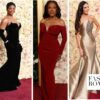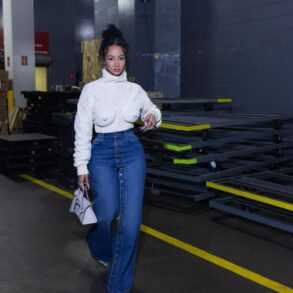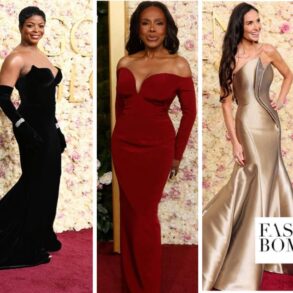It was so hot. That was the most-uttered phrase after the shows of Paris Fashion Week. Talking about the weather is an easy recourse when there’s nothing else to say, but when it’s 32 degrees Celsius (89 in Fahrenheit) in Paris in October, it’s no longer a superficial topic. And not even the fashion industry can turn its back on the heat’s implications. The industry’s responses to climate change have focused on environmental sustainability for years, but the sector that dresses us should have immediate, tangible responses: they decide whether we face 100-degree summers wearing black leather coats or silks and shorts.
Nicolas Ghesquière unintentionally replicated the greenhouse effect by covering in plastic the LVMH building where he presented his Louis Vuitton collection on Tuesday. But the catwalk looks were all lightness, airy fabrics, lamés, chiffons, draped silks and pastel colors. Ghesquière’s cruise collection was inspired by an underwater world of sea creatures, but this time he did not resort to science fiction. Instead, he placed the woman who wears Louis Vuitton in the here and now. The audience’s standing ovation was initiated by Delphine Arnault, according to those who sat in her area. The designer, who this year celebrates his 10th year at the helm of the centenary brand, received it with gratitude.
A few hours earlier, Stella McCartney had occupied the street of a typical Parisian market with the universe of her brand. Heir to the precepts of her mother, a pioneering environmentalist, her brand is one of the few that has not had to update its narrative. It has always prized vegan and sustainable practices. This collection was no different, featuring vegan leathers, fabrics created from algae, recyclable 3D printing and technical clothing. Stella McCartney dresses women with joy and a conscience, showing that beige simplicity is not the only way to exercise consumerist restraint.
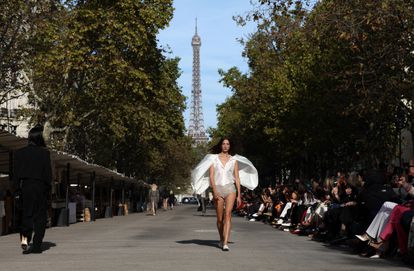
Along with Stella and Maria Grazia Chiuri at Dior, Virginie Viard is one of the few female designers left among the big names after Gabriela Hearst said goodbye to Chloé this week and Sarah Burton to McQueen. Three days later it was announced that Burton will be replaced by Seán McGirr, designer of the men’s division of J.W. Anderson. The designers of the Kering group are now all white men, curious when their main market is dressing women.
Virginia Viard and her work at Chanel are sometimes accused of being predictable. This fashion week, she once again did what she does best: using all the Chanel signatures in practical garments. She did not skimp on tweeds, pink, camellias, logos, denim, or trimmings. This collection was designed for the heat, though, with the tweeds in the form of hooded capes over swimsuits, sailor stripes screaming summer and models wearing flip-flops. Perhaps it is not the most transgressive proposal of the week, but who says Chanel has to be? Far from the spectacular nature of Karl Lagerfeld’s shows, Viard focuses on showing clothes effectively, but at the same time escapes the label of “silent luxury,” another topic hanging over this fashion month. This idea that the truly rich dress in very expensive clothes that only they recognize, in addition to being a false premise, does not affect Chanel. The entire DNA of the brand is based on being recognizable.
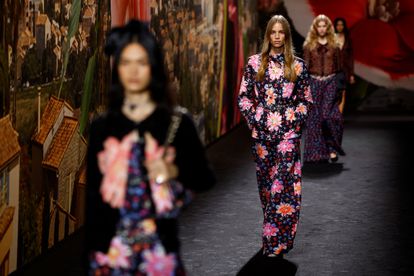
Perhaps the opposite of Viard is Casey Cadwallader’s collection, although both play with the weight of a very specific legacy. The Mugler show, faithful to its Amazons in lycra, women in absolute control of their bodies, and with transparent methacrylate corsets and gauze veils, was a spectacle, featuring Angela Bassett, Paris Hilton, Fan Bing-bing, Helena Christensen, Amber Valletta, Irina Shayk, Natasha Poly, Mariacarla Boscono and the Spanish Esther Cañadas.
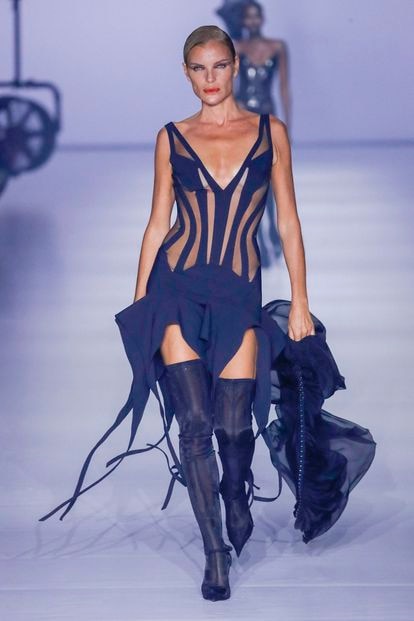
Just an hour later, John Galliano presented his collection for Margiela, one of the most noteworthy shows of the week. In Galliano’s line of constructing nineteenth-century stories, this time the plot line focused on those who crossed the Atlantic Ocean to start a life in the United States: the disinherited who leave with all their clothes on top, superimposed, inside out, without finishing buttoning, with the trimmings, seams and linings visible, sometimes gathered with duct tape or topped with cardboard hats. The attitude was combative, not conformist.
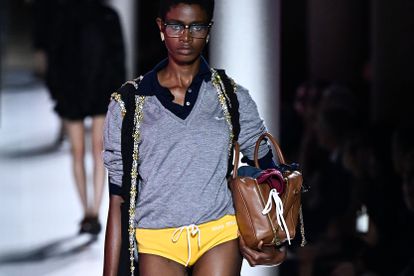
Miu Miu went straight to the Miuccia Prada point. As she always does, Prada chose an artist to show her work on the set. On this occasion, Sophia Al-Maria used the invitation to ask if what we saw was a storm: “Is the sky falling?” In the Palacio d’Lena, Rem Koolhaas’s OMA studio had recreated a landscape of technological ruins. Miuccia’s response to this desperate scenario was inspired by uniforms. The runway featured swimsuits, underwear, sports clothes and elegant brocade dresses. But these garments were presented in an unexpected order, superimposing old garments, “out of respect for history,” according to the press release. Layers are also practical in this apocalyptic moment: you have to carry as much as possible. But the designer also used them to criticize the industry’s hyperproduction. And as that ruined world arrives, it’s useful to be able to shed layers without having to get naked.
Sign up for our weekly newsletter to get more English-language news coverage from EL PAÍS USA Edition
This post was originally published on this site be sure to check out more of their content.



